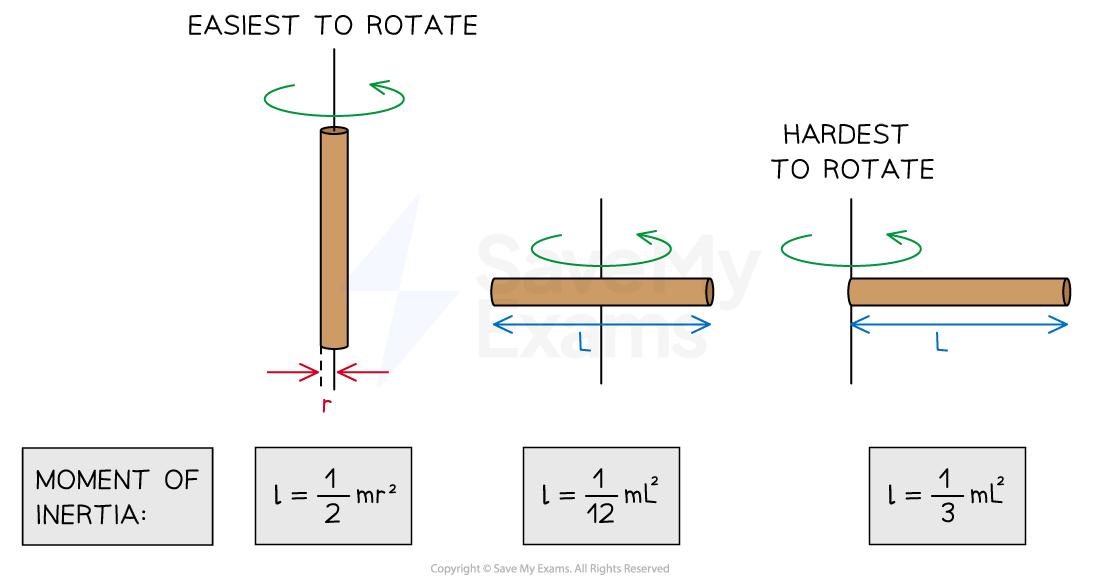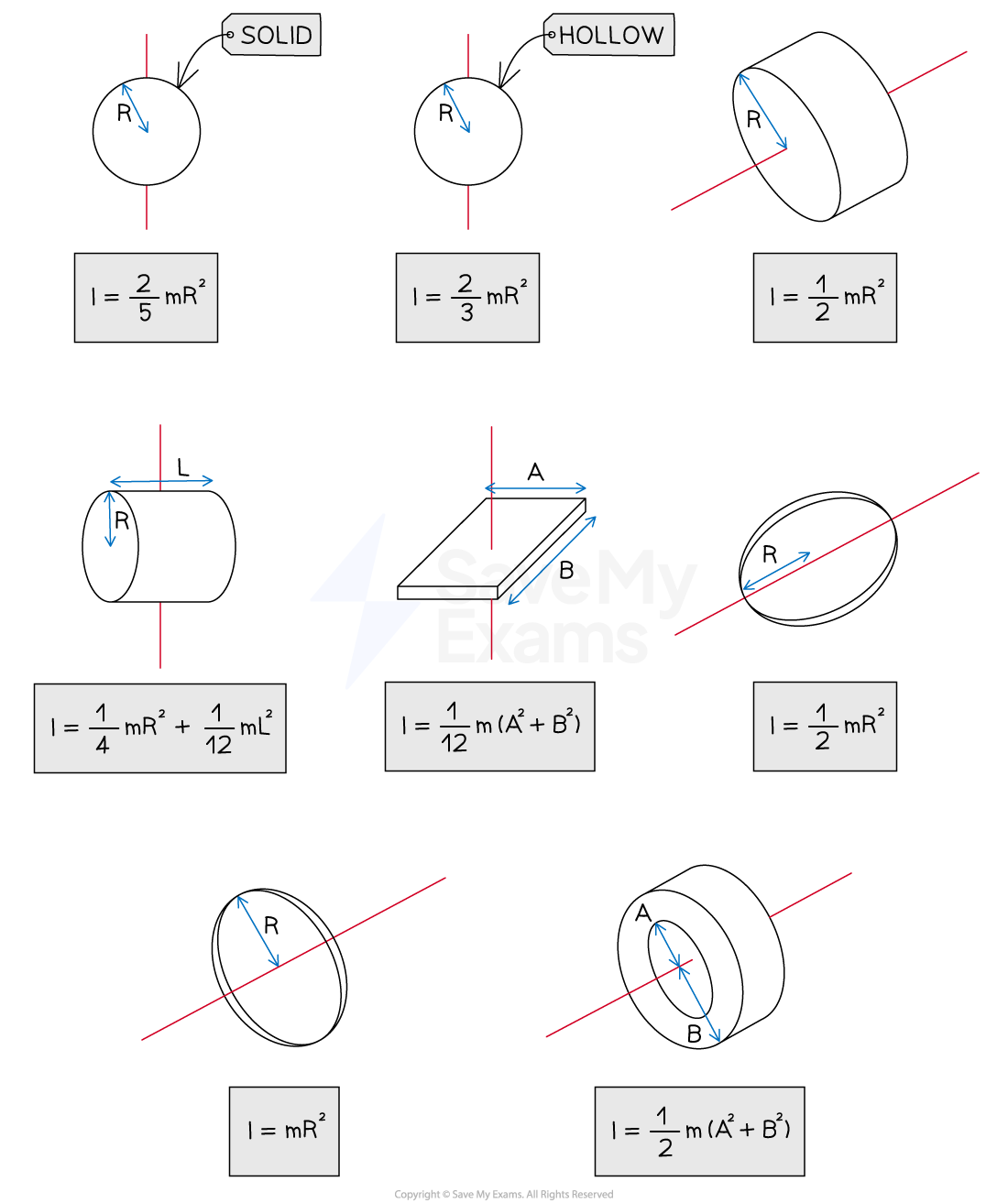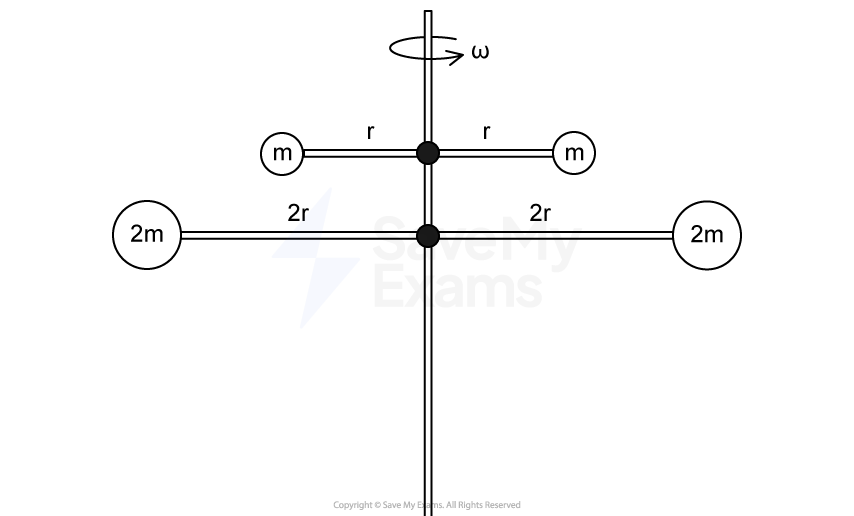Rotational Inertia (College Board AP® Physics 1: Algebra-Based): Study Guide
Rotational inertia
In linear motion, the resistance to a change of motion, i.e. linear acceleration, is known as inertia
The more mass an object has, the greater its inertia
When a rigid system has rotational motion relative to a specified axis of rotation, its distribution of mass around that axis must be considered
This is described by its rotational inertia
The rotational inertia of a rigid system is defined as:
The resistance to a change of rotational motion, depending on the system's distribution of mass around a chosen axis of rotation
Rotational inertia is measured in
The rotational inertia of a body depends on many factors, such as:
its shape
its density
its orientation (relative to an axis of rotation)
For example, the rotational inertia of a thin rod is different for each of the following orientations:
Rotation about its vertical axis
Rotation about its center of mass
Rotation about one end

Examiner Tips and Tricks
Make sure you are clear on the distinction between linear motion and rotational motion here. The implications of considering the distribution of masses in relation to an axis of rotation, as opposed to considering them as uniform, have important consequences when carrying out calculations in rotational dynamics
Rotational inertia equation
The rotational inertia of an object is equal to:
Where:
= rotational inertia, in
= mass of the object, in
= perpendicular distance from an axis of rotation, in
This equation applies to objects which can be considered as a point mass
Total rotational inertia of a system
The total rotational inertia of a system about an axis is equal to the sum of the rotational inertias of each object about that axis:
The rotational inertias of some common extended, rigid bodies are shown below:
Rotational inertia of extended rigid systems

Extended rigid bodies may have the same shape but different rotational inertia
For example, a hollow cylinder and a solid cylinder of the same mass and radius have different rotational inertia
The hollow cylinder has more rotational inertia as its mass is distributed further from the axis of rotation
The solid cylinder has less rotational inertia as its mass is distributed closer to the axis of rotation
Worked Example
A rigid system comprises a vertical support post and two horizontal rods of negligible mass. Two objects of mass are attached to the ends of the upper horizontal rod of length
, and two objects of mass
are attached to the ends of the lower horizontal rod of length
.

(A) Calculate the total rotational inertia of the rigid system.
(B) Do the two upper objects make a greater, lesser, or equal contribution to the total rotational inertia of the system than the two lower objects?
Answer:
Part (A)
Step 1: Analyze the scenario
The total rotational inertia of the rigid system is the sum of
the rotational inertia of two upper objects about the vertical rod
the rotational inertia of the two lower objects about the vertical rod
Step 2: Calculate the rotational inertia of the upper objects
The mass of each object is
The distance between the rotational axis and each object is
Step 3: Calculate the rotational inertia of the lower objects
The mass of each object is
The distance between the rotational axis and each object is
Step 4: Calculate the total rotational inertia of the system
Part (B)
Step 1: Analyze the scenario
The proportion of rotational inertia contributed by the two upper objects is given by:
The proportion of rotational inertia contributed by the two lower objects is given by:
Step 2: Compare the contribution of the rotational inertias
The two upper objects make a lesser contribution to the total rotational inertia of the system than the two lower objects
Examiner Tips and Tricks
For the AP Physics 1 exam, you will only be expected to calculate the rotational inertia for systems of five or fewer objects arranged in a two-dimensional configuration.
You will never be expected to memorize the rotational inertia of different extended rigid systems, as they will always be given in an exam question where required. However, you should be able to explain qualitatively which objects have a greater or lesser rotational inertia, given they have equal mass and radius. For example, for a hoop, a solid disk, and a solid sphere:

Unlock more, it's free!
Did this page help you?